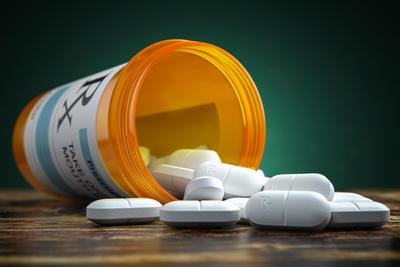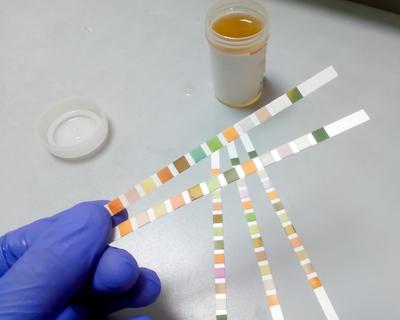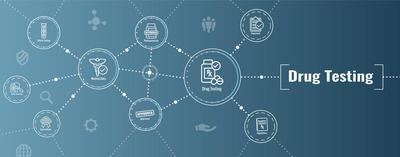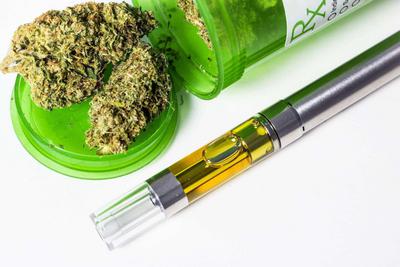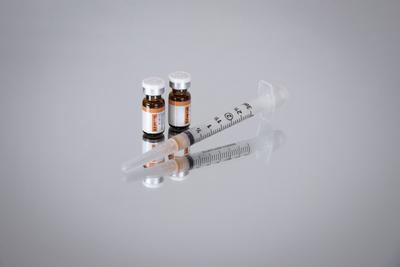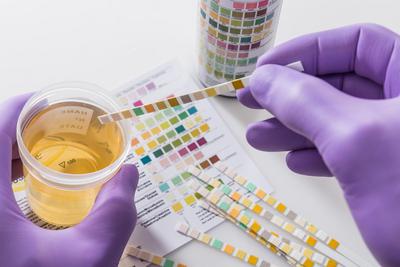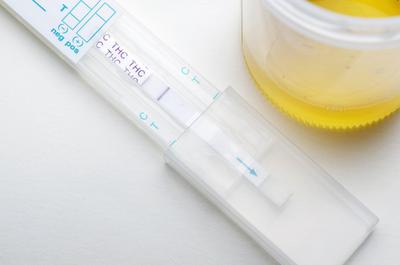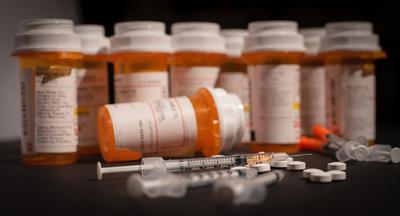
Drug Testing
Articles
About Drug Testing
Recent articles

Written by Diana Vaculova
Published on 5/16/2025

Written by Diana Vaculova
Published on 5/9/2025

Written by Nicole Slaughter
Published on 4/25/2025

Written by Diana Vaculova
Published on 4/18/2025

Written by Diana Vaculova
Published on 4/8/2025

Written by Diana Vaculova
Published on 4/7/2025

Written by Diana Vaculova
Published on 2/21/2025

Written by Tom Church
Published on 2/7/2025

Written by Diana Vaculova
Published on 2/7/2025

Written by Nicole Slaughter
Published on 1/30/2025

Written by Diana Vaculova
Published on 1/24/2025

Written by Diana Vaculova
Published on 1/17/2025

Written by Nicole Slaughter
Published on 1/10/2025

Written by Diana Vaculova
Published on 1/3/2025

Written by Diana Vaculova
Published on 12/27/2024

Written by Nicole Slaughter
Published on 12/6/2024

Written by Diana Vaculova
Published on 12/6/2024

Written by Diana Vaculova
Published on 11/15/2024

Written by Diana Vaculova
Published on 11/1/2024

Written by Diana Vaculova
Published on 10/25/2024

Written by Diana Vaculova
Published on 10/18/2024

Written by Diana Vaculova
Published on 10/11/2024

Written by Diana Vaculova
Published on 10/4/2024

Written by Diana Vaculova
Published on 9/27/2024

Written by Nicole Slaughter
Published on 9/23/2024

Written by Diana Vaculova
Published on 9/20/2024

Written by Diana Vaculova
Published on 9/13/2024

Written by Diana Vaculova
Published on 8/30/2024

Written by Diana Vaculova
Published on 8/16/2024

Written by Diana Vaculova
Published on 8/15/2024

Written by Diana Vaculova
Published on 8/9/2024

Written by Nicole Slaughter
Published on 8/2/2024

Written by Diana Vaculova
Published on 7/29/2024

Written by Diana Vaculova
Published on 7/26/2024

Written by Diana Vaculova
Published on 7/19/2024

Written by Diana Vaculova
Published on 5/24/2024

Written by Jared Rosenthal
Published on 2/22/2024

Written by Jared Rosenthal
Published on 2/1/2024

Written by Jared Rosenthal
Published on 1/31/2024

Written by Jared Rosenthal
Published on 1/30/2024

Written by Jared Rosenthal
Published on 11/17/2023

Written by Jared Rosenthal
Published on 11/15/2023

Written by Jared Rosenthal
Published on 11/14/2023

Written by Diana Vaculova
Published on 10/31/2022

Written by Diana Vaculova
Published on 10/13/2022

Written by Diana Vaculova
Published on 10/13/2022

Written by Diana Vaculova
Published on 6/30/2022

Written by Diana Vaculova
Published on 6/17/2022

Written by Nicole Slaughter
Published on 6/17/2022

Written by Jared Rosenthal
Published on 6/15/2022

Written by Nicole Slaughter
Published on 6/9/2022

Written by Diana Vaculova
Published on 6/9/2022

Written by Diana Vaculova
Published on 6/9/2022

Written by Nicole Slaughter
Published on 6/9/2022

Written by Nicole Slaughter
Published on 6/8/2022

Written by Diana Vaculova
Published on 6/7/2022

Written by Nicole Slaughter
Published on 6/7/2022

Written by Nicole Slaughter
Published on 6/7/2022
Written by Greg Neeser
Published on 2/10/2022

Written by Nicole Slaughter
Published on 2/8/2022

Written by Nicole Slaughter
Published on 2/8/2022

Written by Nicole Slaughter
Published on 2/8/2022

Written by Nicole Slaughter
Published on 2/7/2022

Written by Nicole Slaughter
Published on 2/7/2022

Written by Nicole Slaughter
Published on 2/7/2022

Written by Nicole Slaughter
Published on 2/7/2022

Written by Jared Rosenthal
Published on 5/13/2021

Written by Jared Rosenthal
Published on 4/15/2021

Written by Jared Rosenthal
Published on 4/13/2021

Written by Jared Rosenthal
Published on 4/9/2021

Written by Jared Rosenthal
Published on 3/5/2021

Written by Jared Rosenthal
Published on 8/28/2020

Written by Jared Rosenthal
Published on 8/16/2020

Written by Jared Rosenthal
Published on 6/22/2020

Written by Jared Rosenthal
Published on 6/15/2020

Written by Jared Rosenthal
Published on 6/4/2020

Written by Jared Rosenthal
Published on 4/14/2020

Written by Jared Rosenthal
Published on 2/25/2020

Written by Jared Rosenthal
Published on 1/29/2020

Written by Jared Rosenthal
Published on 10/6/2019

Written by Jared Rosenthal
Published on 9/4/2019
Written by Lindsay Haskell
Published on 7/11/2019
Written by Marie Abendroth
Published on 7/11/2019

Written by Jared Rosenthal
Published on 7/8/2019

Written by Jared Rosenthal
Published on 6/27/2019

Written by Jared Rosenthal
Published on 5/29/2019

Written by Jared Rosenthal
Published on 5/28/2019

Written by Jared Rosenthal
Published on 5/13/2019

Written by Jared Rosenthal
Published on 4/30/2019

Written by Jared Rosenthal
Published on 10/22/2017

Written by Jared Rosenthal
Published on 5/5/2016

Written by Jared Rosenthal
Published on 5/5/2016

Written by Jared Rosenthal
Published on 4/18/2016
Written by Nina Fenton
Published on 4/4/2016
Written by Nina Fenton
Published on 4/4/2016
Written by Nina Fenton
Published on 3/28/2016
Written by Nina Fenton
Published on 3/18/2016
Written by Nina Fenton
Published on 3/14/2016
Written by Nina Fenton
Published on 3/9/2016
Written by Nina Fenton
Published on 3/9/2016
Written by Nina Fenton
Published on 2/29/2016
Written by Nina Fenton
Published on 2/11/2016
Written by Nina Fenton
Published on 2/2/2016
Written by Nina Fenton
Published on 1/21/2016
Written by Nina Fenton
Published on 1/20/2016
Written by Nina Fenton
Published on 1/18/2016
Written by Nina Fenton
Published on 1/11/2016
Written by Nina Fenton
Published on 12/21/2015
Written by Nina Fenton
Published on 12/15/2015
Written by Nina Fenton
Published on 12/3/2015
Written by Nina Fenton
Published on 11/27/2015
Written by Nina Fenton
Published on 11/20/2015
Written by Nina Fenton
Published on 11/20/2015
Written by Nina Fenton
Published on 11/13/2015
Written by Nina Fenton
Published on 11/6/2015
Written by Nina Fenton
Published on 10/30/2015
Written by Nina Fenton
Published on 10/30/2015
Written by Nina Fenton
Published on 10/30/2015
Written by Nina Fenton
Published on 10/23/2015
Written by Nina Fenton
Published on 10/23/2015
Written by Nina Fenton
Published on 10/16/2015
Written by Nina Fenton
Published on 10/16/2015
Written by Nina Fenton
Published on 10/9/2015
Written by Nina Fenton
Published on 10/9/2015
Written by Nina Fenton
Published on 10/3/2015

Written by Jared Rosenthal
Published on 9/30/2015
Written by Nina Fenton
Published on 9/29/2015
Written by Nina Fenton
Published on 9/29/2015
Written by Nina Fenton
Published on 9/28/2015
Written by Nina Fenton
Published on 9/18/2015
Written by Nina Fenton
Published on 9/3/2015

Written by Jared Rosenthal
Published on 1/8/2015

Written by Jared Rosenthal
Published on 1/6/2015

Written by Jared Rosenthal
Published on 1/6/2015

Written by Jared Rosenthal
Published on 1/5/2015

Written by Jared Rosenthal
Published on 11/25/2014

Written by Jared Rosenthal
Published on 11/6/2014

Written by Jared Rosenthal
Published on 3/23/2014

Written by Jared Rosenthal
Published on 3/17/2014

Written by Jared Rosenthal
Published on 12/9/2013

Written by Jared Rosenthal
Published on 12/3/2013

Written by Jared Rosenthal
Published on 11/29/2013

Written by Jared Rosenthal
Published on 11/20/2013

Written by Jared Rosenthal
Published on 11/1/2013

Written by Jared Rosenthal
Published on 10/24/2013

Written by Jared Rosenthal
Published on 10/23/2013

Written by Jared Rosenthal
Published on 10/22/2013

Written by Jared Rosenthal
Published on 10/22/2013

Written by Jared Rosenthal
Published on 10/16/2013

Written by Jared Rosenthal
Published on 10/7/2013

Written by Jared Rosenthal
Published on 10/2/2013

Written by Jared Rosenthal
Published on 10/2/2013

Written by Jared Rosenthal
Published on 9/23/2013

Written by Jared Rosenthal
Published on 9/18/2013

Written by Jared Rosenthal
Published on 9/18/2013

Written by Jared Rosenthal
Published on 9/9/2013

Written by Jared Rosenthal
Published on 7/16/2013







































